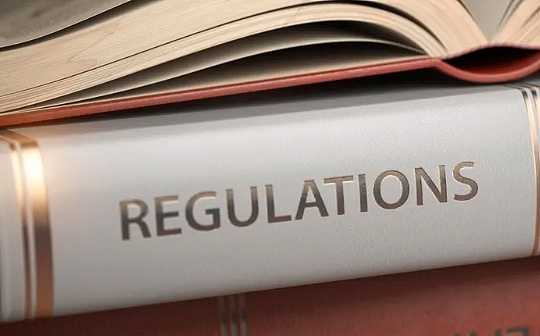
Source: Galaxy; Compilation: Baishui, Bitchain Vision
This report was originally sent privately to Galaxy’s customers and counterparties.Invest or trade on Galaxy and you can receive a high-quality research report directly after the report is released.——Alex Thorn
Preface
As of the time of writing, the total amount of stablecoins in circulation around the world has exceeded US$243 billion.Of these, US$218 billion (90%) is fully mortgaged and denominated in US dollars.These stablecoins are expected to conduct more than 120 million transactions per month, worth more than $700 billion in transactions by 2025.Stablecoins are widely used for cross-border payments, and the cost per transaction is much lower than that of traditional remittances.But at present, they are mainly in the legal gray area in the United States, and existing companies lack sufficient supervision to truly grow and grow within the traditional system, while traditional players face too much regulatory uncertainty and cannot use the cryptocurrency track.
The 2025 U.S. Stablecoin National Innovation Guidance and Establishment Act (“GENIUS Act”) is the U.S. Senate’s stablecoin authorization and regulation bill, designed to bring clarity and certainty to this gray area.The bill was introduced by Sen. Bill Hagerty, a Republican of Tennessee, and was co-sponsored by Sen. Tim Scott, Republican of South Carolina, Sen. Kirsten Gillibrand, Democrat of New York, Sen. Cynthia Lummis, Republican of Wyoming, and Sen. Angela Alsobrooks, Democrat of Maryland.
The bill will establish a strong supervision and regulatory system for stablecoins in the United States and its issuers, open up the path for innovation, and enhance the US dollar’s issuance and reserve status around the world.Stable coins issued under the framework will be strictly regulated by federal standards, whether they are regulated by federal banking regulators, U.S. states, or foreign issuers.The Senate Banking Committee vetoed the bill in March with 18 votes in favor and 6 votes against it, including five Democrats.
On Thursday, May 1, the updated draft was released, which contains several substantive updates, enhancing the wording on national security, financial system security and regulatory accountability.On Saturday, May 3, nine Democrats issued a statement saying they would object to ending the debate in parliament if no further improvements were made to five areas.
This article outlines the GENIUS Act, explains the regulatory framework the bill will create, and highlights the key differences between the latest version and the version passed by the Senate Banking Committee.
Contents of the GENIUS Act
The GENIUS Act constructs a comprehensive framework for regulating stablecoin issuers located in the United States or whose stablecoins are circulated or traded within the United States.Currently, stablecoin issuers are usually registered as money service enterprises (MSBs) with the Finance Department’s Financial Crime Enforcement Bureau (FinCEN) and/or hold licenses in certain states, but except for the regulatory systems in some states, there is no national comprehensive regulatory system to regulate collateral handling, anti-money laundering/anti-terrorist financing compliance, creation and redemption mechanisms, regulation, consumer safety, bankruptcy quarantine and many other aspects.Essentially, currently in the United States, the dollar-backed stablecoins are under almost no regulation.
The following table describes the framework established by the latest version of the GENIUS Act, released on Thursday, May 1.
Interpretation of the provisions of the GENIUS Act
-
Institutions approved to issue stablecoins (Articles 2(23), 2(11), 2(30); Article 3(a)):
Only “payment stablecoin issuers who are approved to issue stablecoins” can issue stablecoins in the United States:
Federal Qualified Issuer:
— The United States Administration of Currency (OCC) Non-banking entity approved under Section 5 [§2(11)(A)]
— Uninsured National Bank licensed by the U.S. Currency Complaint [§2(11)(B)]
— Federal branch approved by the U.S. Currency Complaint [§2(11)(C)]
State Qualified Issuer:
— An entity legally established under state law and approved by the state payment stablecoin regulator [§2(30), §3(a)]
Subsidiaries of depositary institutions approved under Article 5 [§2(23)(A)(i)]
-
Three-year grace period (article 3(a))
Digital asset service providers may not provide or sell stablecoins issued by unlicensed issuing agencies within 3 years from the date of enactment of the bill.
-
Supervision and Supervision (Articles 2(25), 4(b), 7, 13)
Federal regulators: The Comptroller of the Currency (OCC), the Federal Reserve, Federal Deposit Insurance Corporation (FDIC), National Credit Union Administration (NCUA)
State regulator: Responsible for state-level supervision [§7(a)], with the option to join joint supervision or reciprocity arrangements [§4(c), §7(b), §18(d)]
-
Foreign issuers and reciprocity principles (Articles 3(b)(2), 8, 18)
Foreign issuers must:
— From jurisdictions with similar systems [§18(a)(1), §18(b)]
— Register with the Auditor General [§18(c)]
— Comply with US legal orders [§3(b)(2), §8(a)(1)]
The Ministry of Finance may develop reciprocity arrangements [§18(d)]
-
Income Stable Coin (Article 2(23)(B))
Prohibited: Issuers are not allowed to provide income or interest payments on issued stablecoins.
-
Anti-money laundering (AML) and compliance (Articles 4(a)(5), 5(i), 6, 8, 9)
The issuer must:
— Comply with the Bank Secrecy Act [§4(a)(5)(A)]
— Implementing Anti-Money Laundering/Sanctions Programs and Customer Verification [§4(a)(5)(A)]
— Prove compliance every year [§5(i)(1)]
— Submit a report and undergo audit [§6, §9(d)]
-
State and federal regulatory framework (Articles 4(c), 4(d), 5(h), 7, 13)
≤ USD 10 billion Issuance: May Still subject to state regulation [§4(c)(1)]
State government regulatory system must be certified [§4(c)(4)]
> $10 billion issuance: must be transferred to federal supervision unless exempted [§4(d)]
-
Reserve and collateral requirements (Articles 4(a)(1), 4(a)(2), 4(a)(3))
A 1:1 reserve must be maintained:
— US currency, insurance deposits, short-term Treasury bonds, qualified repurchase agreement [§4(a)(1)]
Remortgage is prohibited (exceptions apply) [§4(a)(2)]
If the reserve amount exceeds $50 billion, monthly reserve disclosure and audit [§4(a)(10)]
-
Bankruptcy Protection (Article 11)
— Stablecoin holders have priority when insolvency [§11(a)]
— Reserve assets are not included in the estate [§11(e)]
— The right of redemption is protected [§11(c)]
-
Marketing and Consumer Protection (Articles 4(a)(9), 4(a)(10), 4(e))
— Restrictions on mistakenly referring to stablecoins as fiat or insured currencies [§4(e)(2)]
— The violation can be fined up to $500,000 [§4(e)(3)(B)]
-
Interoperability and international coordination (Article 12, 18(d))
— Interoperability standards can be developed with NIST [§12]
— The Ministry of Finance can establish a reciprocal international framework [§18(d)]
Broadly speaking, the bill establishes a strictly regulated framework for the issuance of stablecoins in the United States:
-
Protect consumers by requiring issuers to be regulated by similar banks, whether or not themselves or not.It has strict requirements on short-term collateral, making the stability of stablecoin reserves comparable to money market funds.In the event of bankruptcy of the issuer, the holder of the stablecoin has the right to be paid first, and in any bankruptcy proceedings, the reserve assets are considered “bankruptcy quarantine.”
-
Protect the security and robustness of the financial system by placing the Currency Supervision Agency (OCC) in the main regulatory seat of stablecoin issuers.Whether a bank or a non-bank institution, stablecoin issuers must register in states that are considered to be comparable to the federal minimum standards at OCC or their own regulatory levels.The liquidity of collateral reserves and their full reserve support ensures that stablecoins are comparable to money market funds.
-
Promote the vigorous development of innovation.Given the transparency, speed and efficiency of public blockchains, stablecoins are of great practicality and represent the pioneering force for financial transaction settlement using such blockchains.They are widely used around the world, covering individuals, businesses and nation-states, significantly enhancing the existing financial track of dollar flows.The bill gives the U.S. “digital asset service provider” (essentially U.S. trading companies and exchanges) a three-year grace period, allowing it to trade existing but unregistered stablecoins, allowing the industry and market to transition smoothly to the new system.
-
Consolidate and expand the dominance of the dollar.Although the influence of the US dollar faces resistance due to international trade and geopolitical development, the US dollar is unmatched in cyberspace.More than 99% of the stablecoins currently in circulation are denominated in US dollars.Incorporating stablecoins into the world’s most advanced and trustworthy capital market regulatory scope will expand its usage and help the US dollar export globally.
-
Support U.S. debt issuance.By requiring a full reserve composed almost entirely of U.S. Treasury bonds, the growth of stablecoins means an increase in the U.S. government’s borrowing capacity.
Democratic criticism
Nine Democrats said they would vote against the final debate on the GENIUS Act, which includes six members of the Senate Banking Committee, five of whom had previously voted to submit the bill to the committee for consideration.
“However, there are still many issues that need to be resolved at this bill, including adding stronger provisions such as anti-money laundering, foreign issuers, national security, maintaining the security and robustness of the financial system, and holding those institutions that do not meet the requirements of the bill accountable. While we are eager to continue working with colleagues to resolve these issues, if the current version of the bill is ultimately submitted to Parliament, we will not be able to vote for the ending debate.”
Politico reported the statement under the title “Democrats change strategies, oppose the Senate Cryptocurrency Act,” but Senator Gallego denied the change, saying “it’s not a Democratic change for no reason” and that “the bill submitted to the full review has backwards on a lot of the progress we have made and does not include other improvements we seek.”
Revised Act Update
The following will analyze the differences between the latest draft of the bill (after revised) and the version adopted by the Senate Banking Committee.We analyzed these changes based on five aspects that Gallego and Democrats expressed still doubts: 1) anti-money laundering; 2) foreign issuers; 3) national security; 4) safeguarding the security and stability of our country’s financial system; and 5) holding accountable for non-compliance with the bill.
National Security
-
Comply with legal orders (article 4(a)(6))
-
The stablecoin issuer is required to prove that it has the technical ability to comply with legal U.S. orders such as freezing, destroying, blocking tokens.
-
Definition of “legal order”
-
Now includes specific requirements and requires judicial or administrative review.
-
Financial coordination requirements
-
Where feasible, the Ministry of Finance must coordinate with the issuer when blocking digital assets.
-
Immunity from Intelligence and Law Enforcement (Article 8(e)(3))
-
Relieve U.S. intelligence and law enforcement actions to comply with critical restrictions.
-
National Security Immunity (Article 8(e)(2))
-
If for national security needs, the Ministry of Finance may waive the secondary transaction restrictions after consultation with the Director of National Intelligence and the State Council.
Foreign issuer
-
Foreign Issuer Restrictions (Section 3)
-
Foreign issuers are not allowed to provide stablecoins to Americans unless new requirements are met (e.g., similar foreign regulation, U.S. reserves, registration).
-
Reciprocity mechanism (Articles 16 and 18)
-
The Ministry of Finance may determine that foreign jurisdictions have equal regulatory standards, allowing issuers to participate under the following conditions:
-
Must be registered with a U.S. regulator.
-
U.S. laws and regulations must be followed.
-
U.S. custodial reserves must be held for U.S. users.
-
Revoke safe port in 90 days
-
If the Ministry of Finance revokes comparable status, a 90-day grace period allows the market to adjust before the restrictions take effect.
-
Secondary market transactions are prohibited (Article 8(c))
-
Trade non-compliant foreign stablecoins in the United States after designation is prohibited – unless the Treasury Department gives an exemption, it will be enforced.
Anti-money laundering (AML)
-
Expanding the Anti-Money Laundering Program Requirements (Article 4(a)(5))
-
The issuer must:
-
Implement anti-money laundering/criminal investment plans/sanctions compliance regulations,
-
Monitor and report suspicious activity,
-
Keep records and conduct intensive due diligence.
-
Annual Anti-Money Laundering Certificate (Article 5(i))
-
Officials must prove themselves annually that they comply with anti-money laundering regulations; false proof will cause criminal liability and risk of revocation.
-
New “Anti-money laundering innovation” chapter (Section 9)
-
The Ministry of Finance must study new tools (such as artificial intelligence, blockchain forensics) to improve anti-money laundering compliance; the Financial Crime Enforcement Bureau needs to follow up guidance or rule-making.
-
Anti-money laundering regulations for foreign issuers (Article 8(b))
-
If a foreign issuer fails to comply with legal orders related to anti-money laundering, the Ministry of Finance must designate it as a non-compliant person.
The robustness and security of the financial system
-
Reserves and Assets Support (Article 4(a)(1))
-
Strengthen the 1:1 asset support requirement; assets must be high-quality and high-liquidity.
-
Bankruptcy Protection (Article 11)
-
It is determined that the holder of the stablecoin has priority claims over other creditors; if the issuer goes bankrupt, it requires a timely redemption.
-
Federal Financial Risk Assessment (Article 15)
-
Added requirements for FSOC to assess the risks associated with stablecoins in its annual financial stability report.
-
State and federal system coordination (Section 7)
-
Strengthen the Treasury’s supervision of state-regulated issuers by requiring the federal government to authenticate “basically similar” state systems.
-
Prohibiting the issuance of income stablecoins (Article 2(23))
-
Institutions approved to issue stablecoins shall not provide income or interest on their stablecoins.
Accountability and law enforcement
-
Civil penalties for family violations (Article 6(c)(5))
-
Unauthorized issuance, up to a fine of USD 100,000 per day.
-
Knowing that the violation is violated, the maximum fine is US$200,000 per day.
-
After-resignation accountability can be up to six years.
-
Penalties for violations by foreign issuers (Article 8(c)(4))
-
After being found to be a violation, the maximum fine is $1 million per day.
-
The Treasury Department may seek a ban to suspend its transactions in the United States.
-
Judicial Review of the Ministry of Finance’s Action (Article 8(d))
-
Foreign issuers are allowed to appeal to the District of Columbia Circuit Court for non-compliance designation.
-
Strengthen regulatory powers (Article 6)
-
Authorize the revocation, removal of officials, issuance of cessation orders and other regulatory tools for federal regulators.
Each of the above changes was made within weeks after the committee voted to pass the bill with an overwhelming majority (18 votes, 6 votes, of which five Democrats and Republicans joined forces) and many of them reflected specific requirements from members of the Senate Banking Committee who either voted against the bill in the committee or required such changes before the bill was submitted to parliament for consideration.Our analysis shows that nearly all the changes make the bill more strict oversight of stablecoin issuers than the version voted by the Senate Banking Committee.
in conclusion
Overall, the latest GENIUS Act represents a strong victory for the cryptocurrency industry and traditional finance sectors in promoting innovation and protecting consumers.It creates a reasonable path to registration, while implementing strict supervision and regulatory provisions, and imposes severe penalties on violations.The passage of the GENIUS Act will enhance the influence of the US dollar at home and abroad, making it more convenient for individuals and businesses to conduct daily transactions in domestic, cross-border or international trade.All involved have gained a significant gain from it: the cryptocurrency industry has both gained viable paths of development and is regulated; it protects the financial system and helps the United States succeed in geopolitical and rapidly changing global economy.







